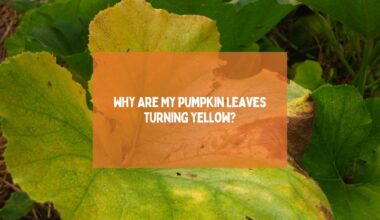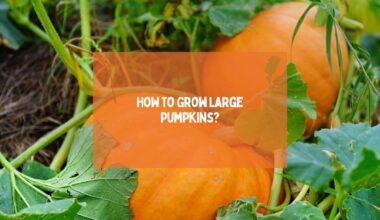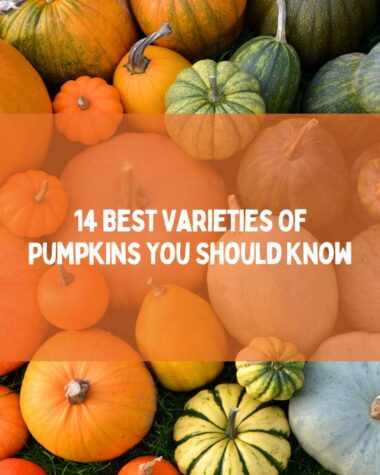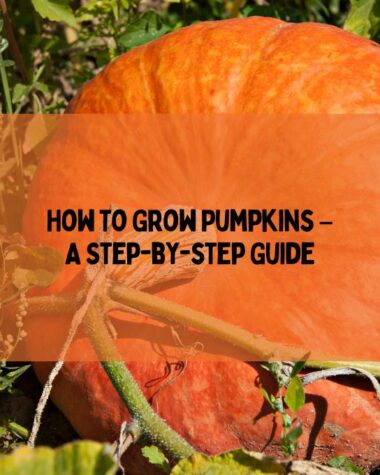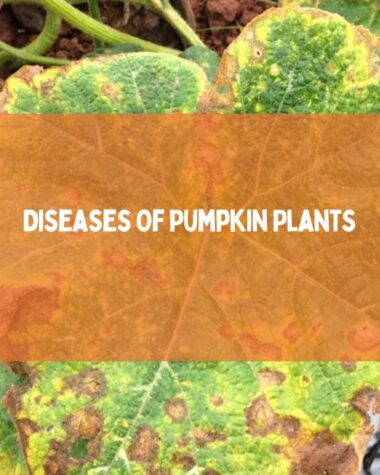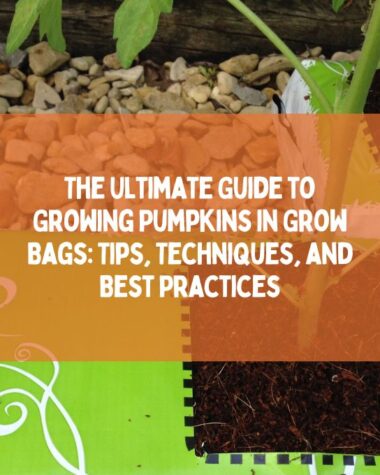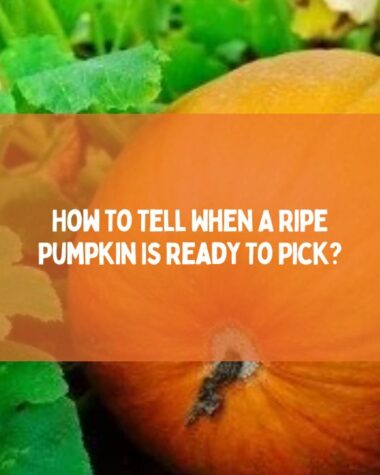Yes, you can grow pumpkins in containers. For this, take a container that is at least 5 gallons in size, but larger containers are better if you have the space. The soil should be well-draining and nutrient-rich, and you can add compost or fertilizer to provide the plant with the nutrients it needs.
Containers can be moved around to take advantage of the best sunlight exposure and temperature conditions, allowing you to optimize the plant’s growth. They can also be protected from pests and diseases that can affect plants grown in the ground.
In this article, we will cover everything you need to know about growing pumpkins in containers.
Growing Small Pumpkin In Containers – A Step by Step Guide
Pumpkins can be grown in pots or other containers, as long as the container is large enough and has good drainage.
Growing pumpkins in containers is a great way to enjoy this delicious fruit, even if you don’t have a large garden or yard space. With the right care and attention, you can grow pumpkins successfully in pots or other containers.
Growing pumpkins in containers is a great option for gardeners who want to maximize their growing space or have more control over the growing conditions. With the right container, soil, and care, pumpkins can thrive in containers and provide a bountiful harvest.
1. Choosing the Right Container
When it comes to growing pumpkins in containers, you need to choose the right container. The container should be at least 20 inches deep and 18 inches wide. The larger the container, the better it will be for the pumpkin plants to grow.
Make sure that the container has drainage holes at the bottom, which will allow excess water to escape.
2. Choosing the Right Soil
The soil you use for growing pumpkins in containers should be rich and fertile. Use good-quality potting soil that has a pH level between 6.0 and 7.0. Mix in some compost or well-rotted manure to enrich the soil further.
3. Planting Pumpkin Seeds
Once you have chosen the container and soil, it’s time to plant the pumpkin seeds. Plant the seeds in late spring or early summer, when the soil has warmed up to at least 65 degrees Fahrenheit.
Place the seeds about an inch deep into the soil and cover them with soil. Water the soil well and keep it moist until the seeds germinate.
Related Reading:
- Eggplant Vertical Gardening: A Space-Saving Solution for Growing Eggplant
- How to Grow Tomatoes – The Step-by-step Guide from Seeds to Harvest
4. Choose A Location
Pumpkins require a lot of sunlight, so choose a location that gets at least 6–8 hours of direct sunlight per day. Pumpkins take about 90 to 120 days to mature, depending on the variety. Giving sunlight daily for 6-8 hours helps to grow the fruit healthy.
5. Watering The Plants Daily
Pumpkins require a lot of water, especially as they start to grow. Water your container deeply and regularly to keep the soil moist but not waterlogged. water directly at the base of the plant, avoiding getting water on the leaves.
Use a watering can or a drip irrigation system to water your pumpkins. Avoid using a hose with high water pressure, which can damage the plant.
During hot and dry weather, you may need to water your pumpkin container more frequently. During cool and damp weather, you may need to water less frequently.
6. Provide Support To Pumpkins
Using trellises, stakes, or cages is another excellent method for growing pumpkins in containers. These structures provide support for the vines and fruits, prevent the plants from sprawling on the ground, and make harvesting easier.
Here are some reasons why you should consider using trellises, stakes, or cages when growing pumpkins in containers:
- Space-saving: By training the vines to grow vertically, you can save space in your container garden and grow more plants in a smaller area.
- Better air circulation: Growing pumpkins on a trellis or cage allows for better air circulation around the plant, reducing the risk of diseases caused by poor airflow.
- Prevents damage: Pumpkins grown on the ground are more susceptible to damage from pests, soil-borne diseases, and rot.
- Easier harvesting: Harvesting pumpkins grown on a trellis or cage is much easier than harvesting those grown on the ground. The fruits are more visible, easier to reach, and less likely to be hidden by leaves or other foliage.
When choosing a trellis, stake, or cage, make sure it is strong enough to support the weight of the growing plant and fruits.
7. Mulching Around Plants
Mulching is an essential practice when growing pumpkins in containers. Mulching involves adding a layer of organic material, such as straw, leaves, or grass clippings, to the soil surface around the base of the plant.
Here are some reasons why mulching is beneficial when growing pumpkins in containers:
- Mulch helps to retain moisture in the soil, reducing the need for frequent watering.
- As the mulch breaks down, it adds organic matter to the soil, improving soil structure and fertility. This, in turn, helps to promote healthy root growth and overall plant health.
- Mulch helps to prevent soil erosion by reducing the impact of rain and wind on the soil surface.
- It also helps to suppress weed growth around the base of the pumpkin plant, reducing competition for nutrients and water.
When mulching pumpkins in containers, it’s important to choose a mulch material that won’t compact or smother the plant. A layer of 2-3 inches of straw, shredded leaves, or grass clippings is usually sufficient. Avoid using mulch materials that contain weed seeds or are prone to mold or disease.
8. Pests and Diseases
Growing pumpkins in containers can be a great way to enjoy fresh pumpkins in a limited space, but it is important to be aware of potential pests and diseases that can impact the health of the plants.
- Pests such as aphids, spider mites, and squash bugs can cause damage to the leaves and fruits of pumpkin plants.
- Pumpkin plant diseases such as powdery mildew and downy mildew can also be a concern, particularly in humid or damp conditions.
It is important to regularly inspect plants for signs of damage or disease and take appropriate steps to manage any issues. This may include practices such as using insecticidal soaps or natural predators to control pests or applying fungicides to prevent or treat diseases.
9. Caring for Pumpkin Plants
Once the pumpkin plants start to grow, they need proper care to produce healthy fruits. Here are some tips for caring for your pumpkin plants:
- Water the plants regularly, making sure that the soil stays moist but not waterlogged.
- Fertilize the plants once a week with a balanced fertilizer that is high in nitrogen and potassium.
- Prune the pumpkin plants to keep them from getting too bushy. Cut off the side shoots and leaves that are not necessary for the plant’s growth.
- Provide support to the pumpkin plants by using stakes or trellises. This will prevent the fruit from touching the ground and getting damaged.
10. Harvesting Pumpkins
Pumpkins take about 90 to 120 days to mature, depending on the variety. When the pumpkins are ripe, they will turn a deep orange color, and the stem will start to dry out.
Cut the pumpkins from the plant with a sharp knife, leaving a few inches of stem attached. Store the pumpkins in a cool, dry place until you are ready to use them.
Related Reading:
Conclusion
It is important to keep in mind that pumpkins require a lot of space and nutrients to grow to their full size.
So it is recommended to choose a large container with good drainage and nutrient-rich soil. Regular watering and fertilization are also essential for a healthy pumpkin plant, and it’s important to keep an eye out for pests and diseases.
With proper care, pumpkins can thrive in containers and provide a bountiful harvest for the gardener to enjoy.
Thanks for reading!
